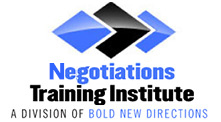The ability to negotiate well is a skill that can help propel you forward in your career. Therefore, it is helpful to learn a variety of techniques that can help you become a more successful negotiator. One of the oldest yet most effective techniques is the art of flattery. Charm and flattery has proven to be an effective way to gain leverage in a negotiation. Everyone likes to think they make decisions based on facts and logic, but the truth is that when a few compliments are thrown in, their judgment is all over the place. When used correctly, flattery has the ability to motivate the other person to respond. Here are a few indirect ways you can use flattery and charm to get what you want in a negotiation.
1. Flattery as Advice Seeking
This kind of flattery occurs when a person poses a question and asks for advice in a way that flatters the subject. For example, “How were you able to close that deal so successfully?” You are asking questions that provide you with helpful information but you are complimenting the person at the same time which only prompts them to want to share their secrets.
2. Appear to Conform
Another great tactic that involves flattery is framing your response as though you are conforming to the other person’s ideas. For example, “I didn’t agree with you at first but now I understand. You have convinced me.” This will flatter the other person and encourage them to continue a positive dialogue with you.
3. Engaging in Shared Ideas
You can flatter someone by expressing values or morals that you both share such as, “I’m the same way. I agree with you that we should increase the pricing.”
4. Complimenting Someone to Colleagues
It can be advantageous to compliment the person you will be negotiating with to their colleagues in hopes of the compliment getting back to them before your conversation. This will allow your conversation to start off on a positive note, with the other person liking you right from the start.
5. Framing Flattery as Likely to Make Them Uncomfortable
You can strategically position your remarks in a way that they flatter the other person while still making you look professional. For example, “I hope this doesn’t embarrass you but your presentation far exceeded my expectations.”
When delivered authentically, flattery can be a powerful tool to bring your counterpart over to your side. That said, be mindful of keeping your flattery professional and genuine. You don’t want to come across as manipulative. Equally, you don’t want to blur the line between professional and too personal. Simply let the person know that you appreciate them and complement them in ways that are both flattering and professional at the same time.
